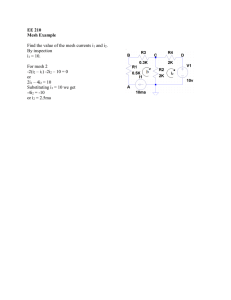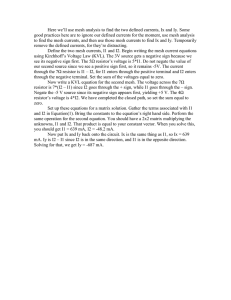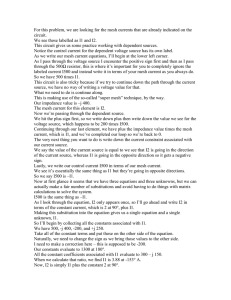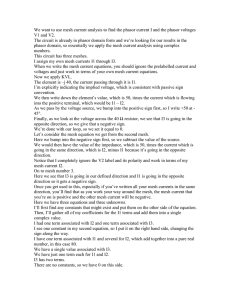Here we will use mesh current analysis to find the... Our approach will be to find the mesh currents first.
advertisement
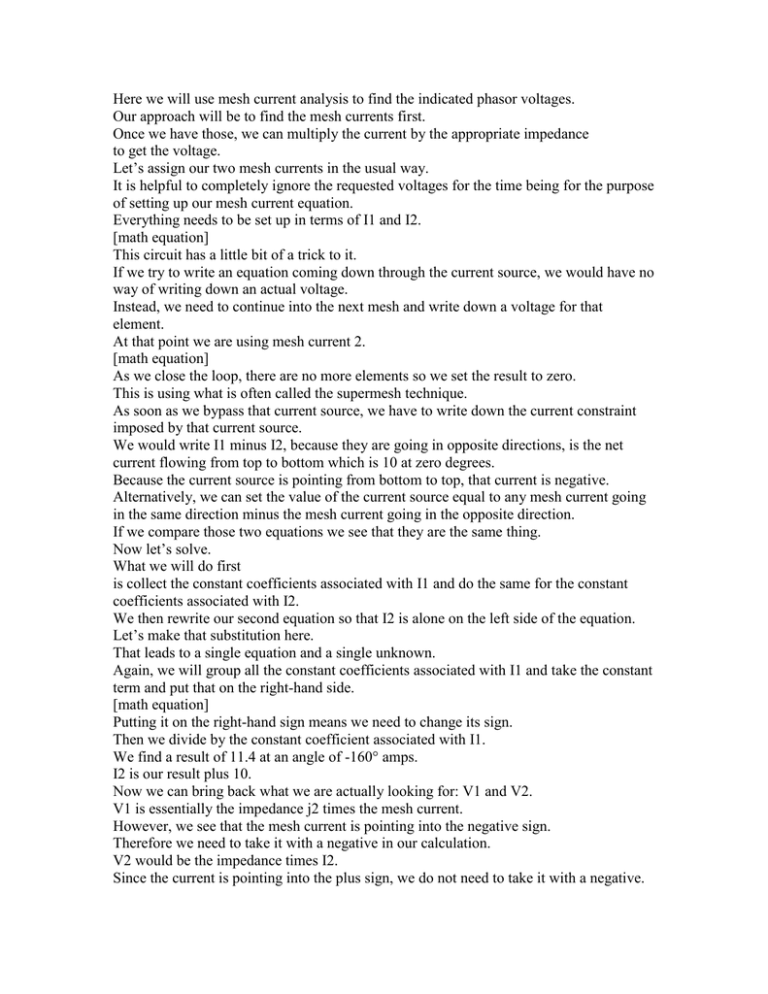
Here we will use mesh current analysis to find the indicated phasor voltages. Our approach will be to find the mesh currents first. Once we have those, we can multiply the current by the appropriate impedance to get the voltage. Let’s assign our two mesh currents in the usual way. It is helpful to completely ignore the requested voltages for the time being for the purpose of setting up our mesh current equation. Everything needs to be set up in terms of I1 and I2. [math equation] This circuit has a little bit of a trick to it. If we try to write an equation coming down through the current source, we would have no way of writing down an actual voltage. Instead, we need to continue into the next mesh and write down a voltage for that element. At that point we are using mesh current 2. [math equation] As we close the loop, there are no more elements so we set the result to zero. This is using what is often called the supermesh technique. As soon as we bypass that current source, we have to write down the current constraint imposed by that current source. We would write I1 minus I2, because they are going in opposite directions, is the net current flowing from top to bottom which is 10 at zero degrees. Because the current source is pointing from bottom to top, that current is negative. Alternatively, we can set the value of the current source equal to any mesh current going in the same direction minus the mesh current going in the opposite direction. If we compare those two equations we see that they are the same thing. Now let’s solve. What we will do first is collect the constant coefficients associated with I1 and do the same for the constant coefficients associated with I2. We then rewrite our second equation so that I2 is alone on the left side of the equation. Let’s make that substitution here. That leads to a single equation and a single unknown. Again, we will group all the constant coefficients associated with I1 and take the constant term and put that on the right-hand side. [math equation] Putting it on the right-hand sign means we need to change its sign. Then we divide by the constant coefficient associated with I1. We find a result of 11.4 at an angle of -160° amps. I2 is our result plus 10. Now we can bring back what we are actually looking for: V1 and V2. V1 is essentially the impedance j2 times the mesh current. However, we see that the mesh current is pointing into the negative sign. Therefore we need to take it with a negative in our calculation. V2 would be the impedance times I2. Since the current is pointing into the plus sign, we do not need to take it with a negative. Here is our finished result, and we are done with this problem.


